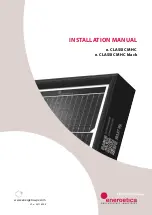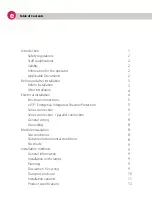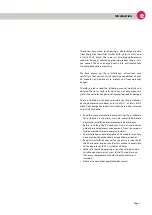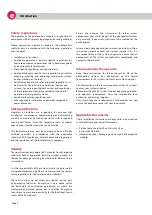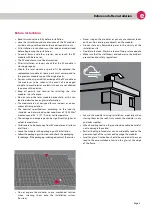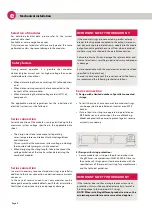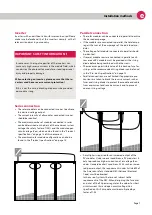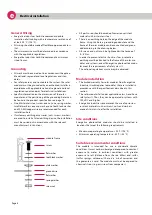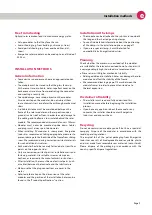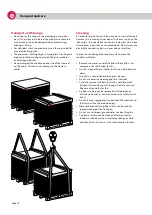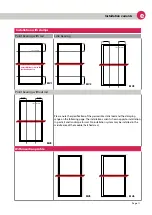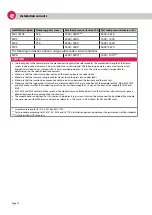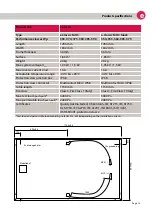
Electrical installation
General Wiring
»
Energetica Industries GmbH recommends double
insulation of all cabling with a temperature resistance of
at least 90 ° C (194 ° F).
»
All wiring should be made of flexible copper conductors
(Cu).
»
The minimum size must be determined in accordance
with the applicable regulations.
»
Energetica Industries GmbH recommends a minimum
size of 6 mm.
Grounding
»
All work must be carried out in accordance with applica-
ble national, regional and local regulations and stan-
dards.
»
For safety reasons and to maintain the system, the solar
modules must be grounded by an authorized installer in
accordance with applicable national, regional and local
regulations and standards for electrical installations.
»
Specific information on the dimensions of the solar
modules and the positioning of the grounding holes can
be found in the product specifications on page 13.
»
One M4 stainless steel screw, one nut, one spring washer,
two flat washers, one cup washer, one tooth lock washer
and 12 AWG copper wire are recommended for each
installation hole.
»
If customary earthing accessories (nuts, screws, washers)
are used to install a listed earthing device, the installation
must be carried out in accordance with the relevant
manufacturer's instructions.
»
All parts used should be made of corrosion-resistant
material such as stainless steel.
»
There is an earthing hole on the edge of the module
frame. Using this hole, a grounding conductor and the
frame of the solar module can be connected and groun
ded according to the drawing below.
»
All screws and nuts must be tightened with a torque of
4 ~ 5 Nm.
»
In order to prevent electric shocks or fires, protective
earthing must be attached to the frame of the solar mo
dules and systems, even if Energetica photovoltaic modu
les meet the requirements of safety class II.
The national regulations must always be observed.
Module installation
»
The limited warranty for solar modules from Energetica
Industries GmbH applies to modules that are installed in
accordance with the specifications described in this
section.
»
The solar modules fall under application class A and have
safety class II. Thus, they can be operated in systems with
120 V DC and higher.
»
Energetica Industries recommends the use of corrosion-
resistant materials such as screws, nuts and washers
made of stainless steel for the installation.
Site conditions
Energetica photovoltaic modules should be installed in
locations that meet the following requirements:
»
Maximum operating temperature: +90 °C (194 °F)
»
Minimum operating temperature: -40 °C (-40 °F)
Suitable environmental conditions
The module is intended for use in moderate climatic
conditions. It must not be submerged or exposed to constant
exposure to water. In ambient conditions with greater
exposure to salt (distance from the sea 500m) and sulfur
(sulfur springs, volcanoes) there is a risk of corrosion and
the guarantee is void. The module must not be exposed to
chemical strains (e.g. emissions from companies).
module frame
screw
flat washer
tooth lock washer
plate washer
ground wire
flat washer
spring washer
screw nut
Page 8
e

